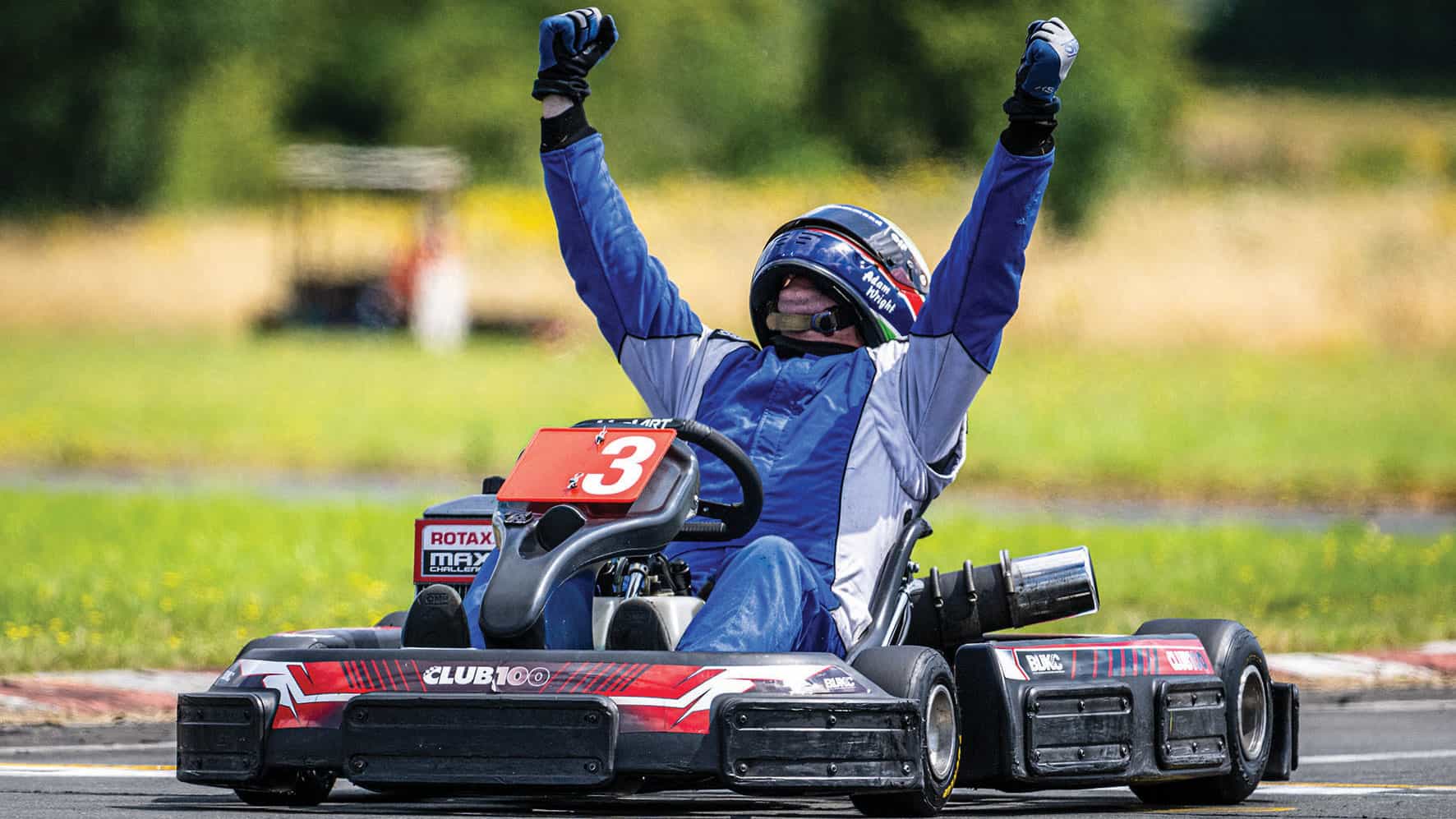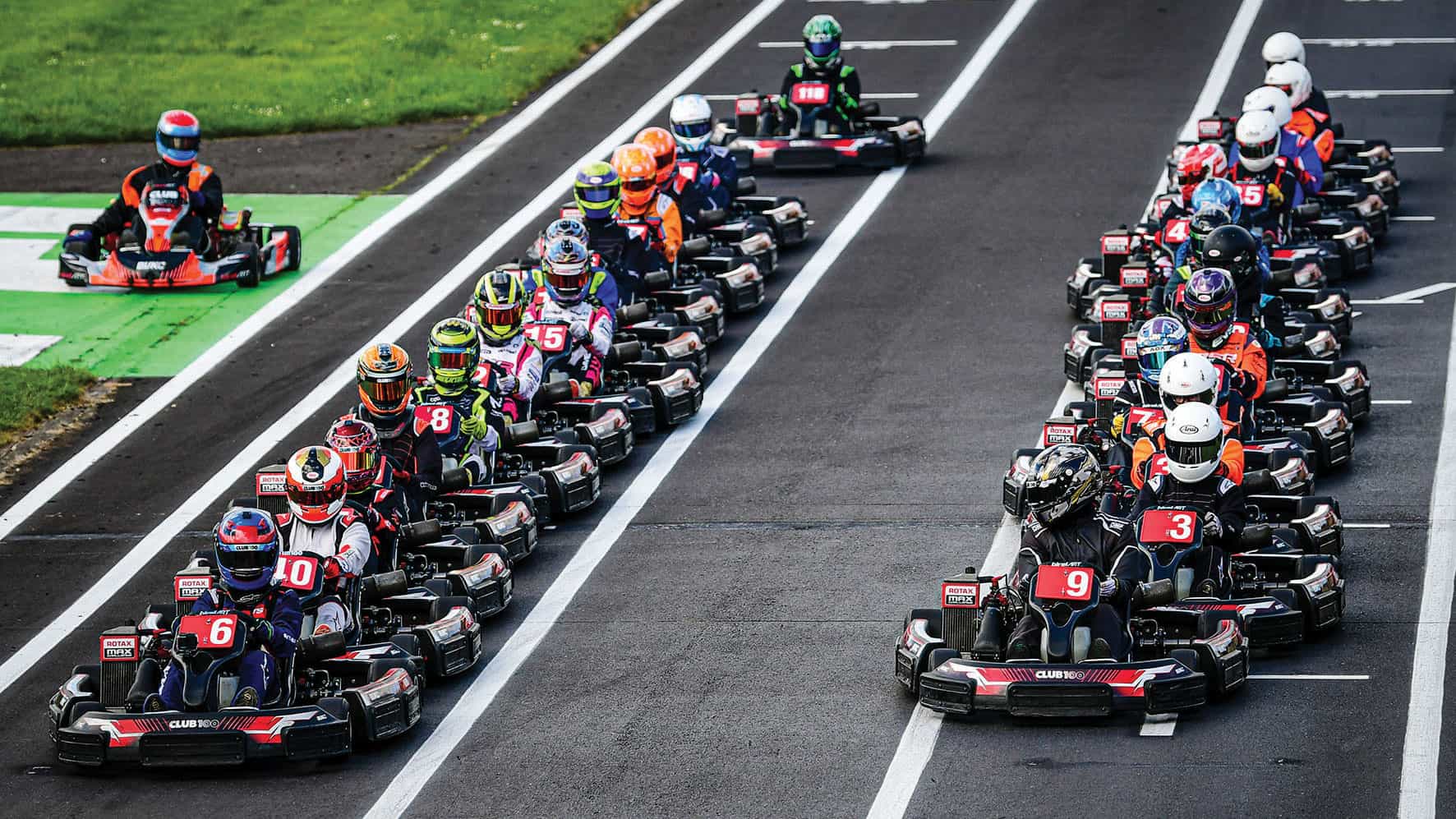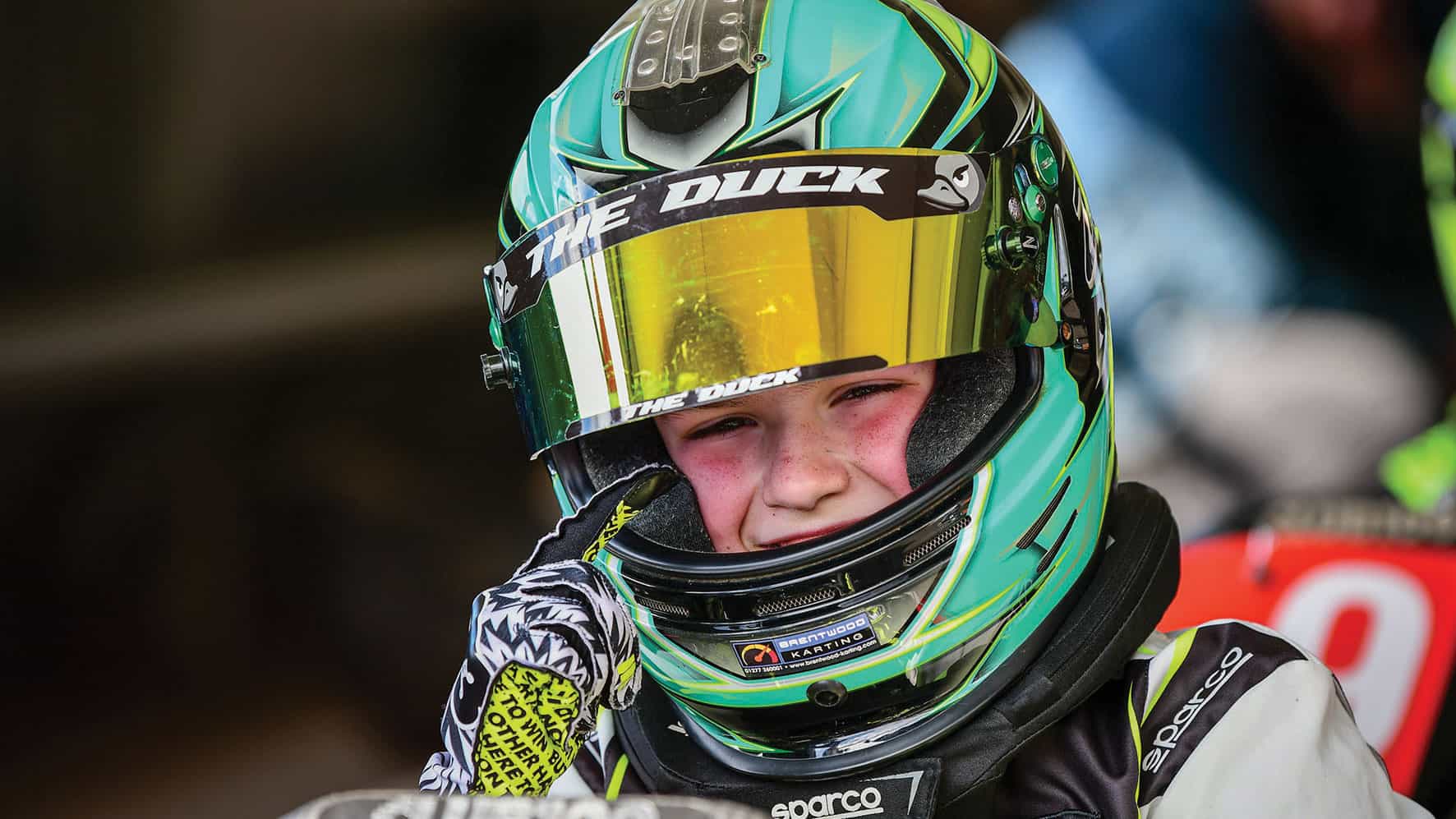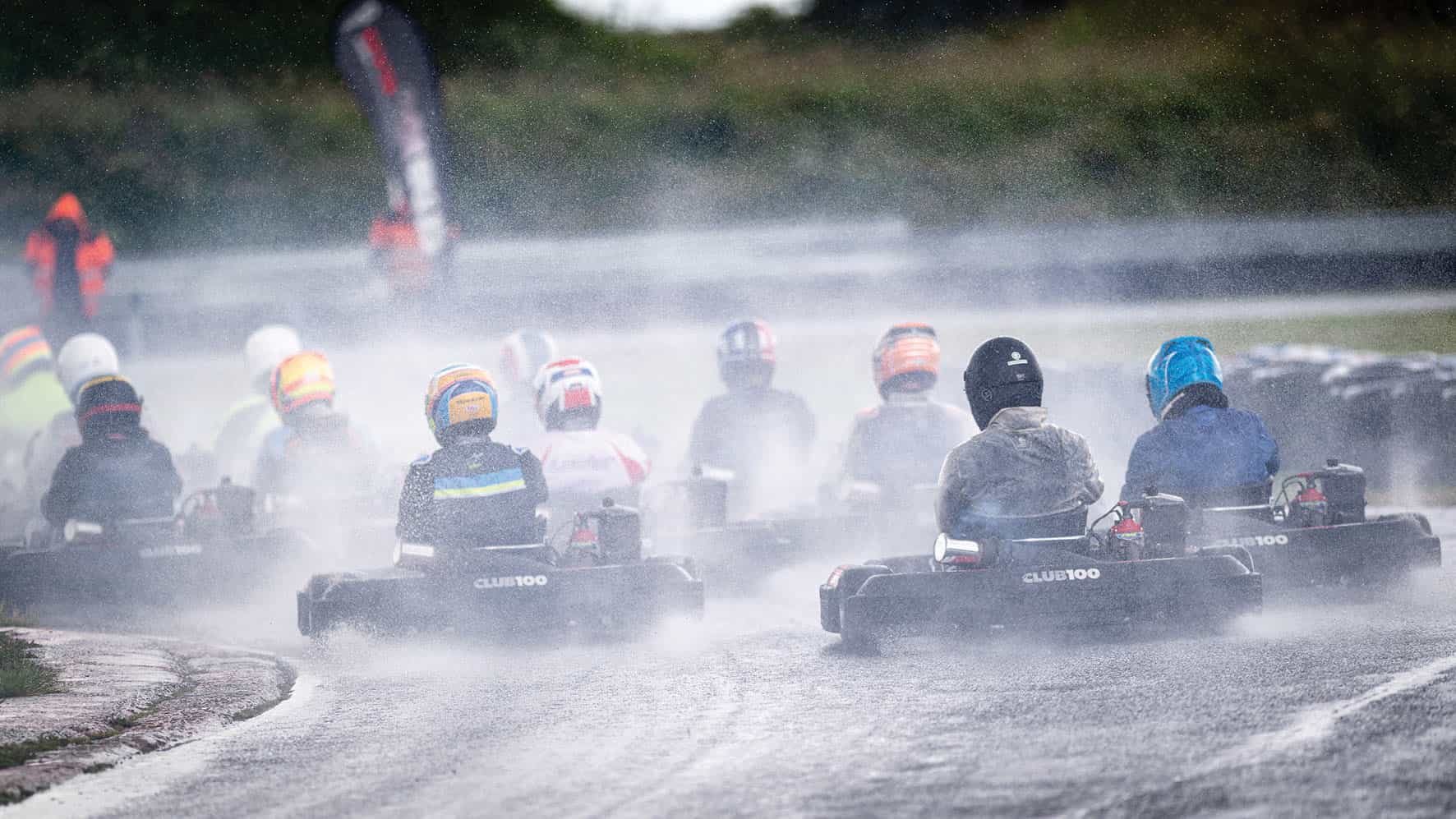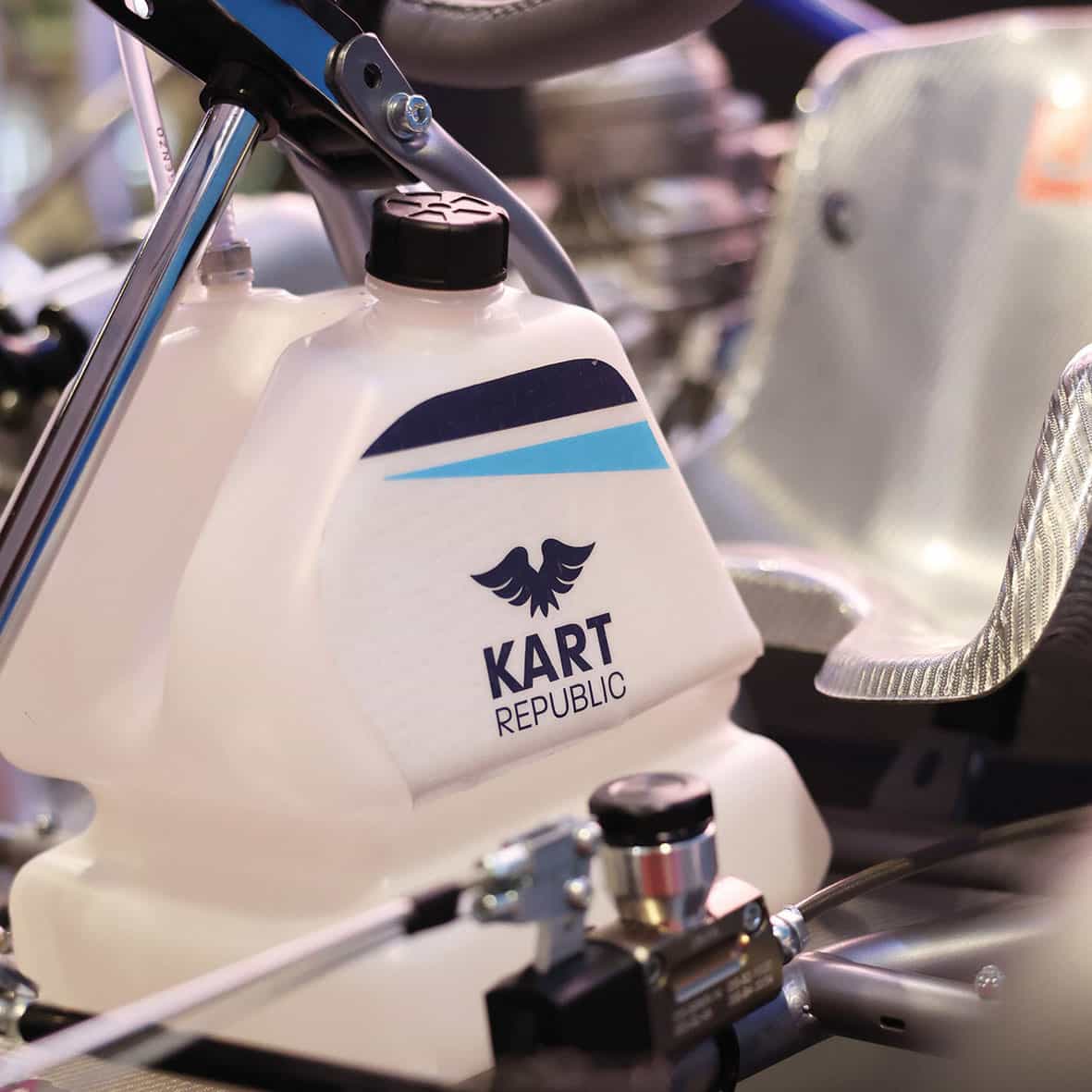How to be a racing driver… with arrive-and-drive karting
Arrive-and-drive karting has long been dismissed as leisure rather than motor sport. But now that’s changing – and fast with new championships. About time too, as Damien Smith explains
John Patterson
How much do you think it costs these days to take a kid from cadet karting to Formula 1? We recently asked someone who should know, and the reply was around £15m. We have a hunch that’s probably conservative.
There’s no getting around it: motor sport has a bad rap as one of the most inaccessible, elitist sports one can aspire to. But let’s forget F1 for a moment. Even for the most financially blessed young racer, F1 is a moonshot. Put aside such lofty aspirations and actually motor sport doesn’t have to be so far out of reach. A cost will always be attached, but it doesn’t have to be a sum that’ll break the BMD (Bank of Mum and Dad).
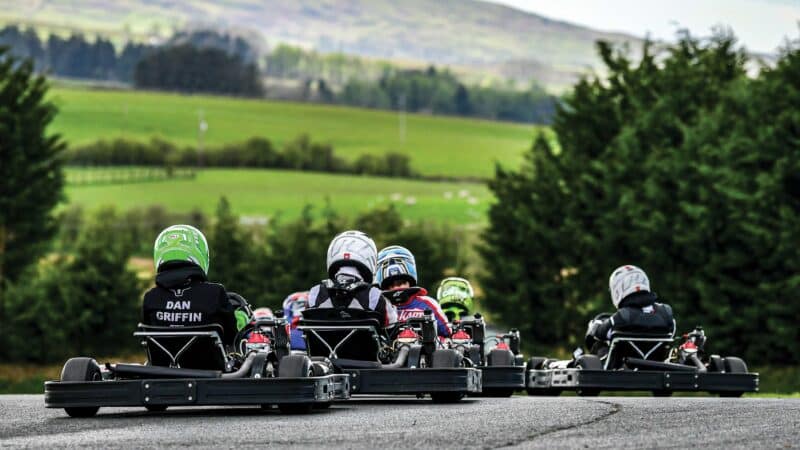
Arrive and drive karting – affordable and not just for ‘leisure’ – is a viable route into motor sport
John Patterson
‘Arrive and drive’ karting has been around for decades, at venues both indoors and out. You’ll know the drill: for upwards of £30 you get an allocated amount of time to hop in a basic, low-powered kart run centrally by the venue for a blast with your mates. It’s not actual motor sport, is it? Actually, yes, it is. Dismissing arrive and drive as a leisure activity for stag/hen dos or kids’ birthday parties is a mistake – and finally the penny has dropped, from the top of world governing body the FIA to national ASNs such as Motorsport UK. Now arrive and drive has official recognition as motor sport’s bedrock. After more than 30 years, it’s been discovered.
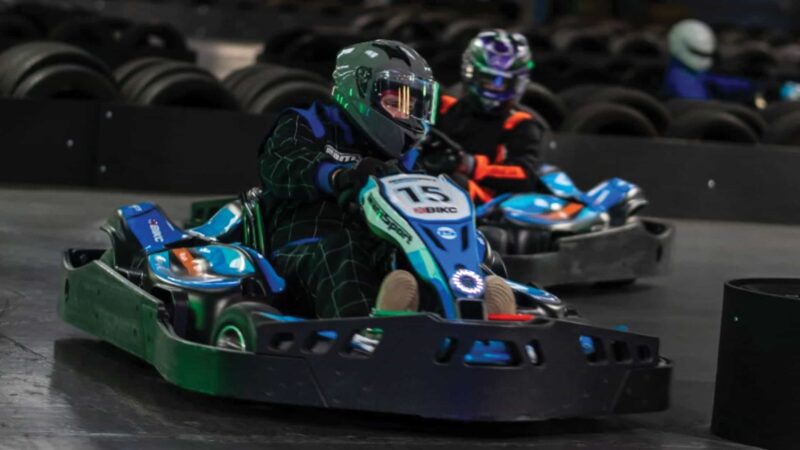
Club100 is the headline sponsor of The British Indoor Karting Championship
John Patterson
“In order to grow participation, we must expand the base of the karting pyramid to allow as many people as possible to experience karting for the very first time,” FIA president Mohammed Ben Sulayem announced late last year as the body launched a new initiative to encourage arrive and drive concepts at national level. According to its statement, there are more than 3000 rental kart tracks around the globe, and finally the FIA now recognises that “leisure karting is an untapped resource for the competitive motor sport market”. It’s good they are paying attention, isn’t it?
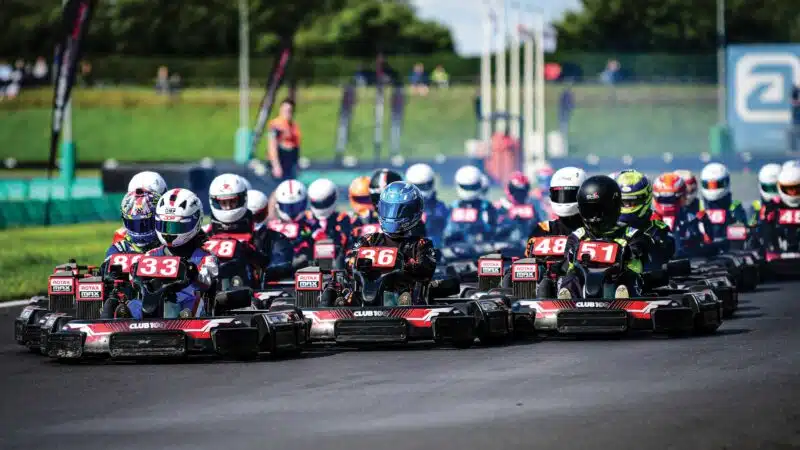
Has your kid got ‘it’? Finding winners from non-traditional backgrounds is essential.
John Patterson
So, what’s the best way in? There are plenty of options already out there with more to follow. Jamie Chadwick has put her name to a new series launched at the UK’s Daytona tracks, aimed at increasing female participation (the company claims only 13% of karters are women and girls); the Daniel Ricciardo Series is expanding from owner-driver karting to arrive and drive in 2025; another well-known figure from F1 has just rebooted his electric-powered initiative with global expansion in mind; and MSUK has teamed up with an established promoter to resurrect a familiar name Lewis Hamilton’s generation will recognise for a launch next year.
But first let’s find out more from a karting lynchpin that’s been championing accessible arrive and drive motor sport for years.
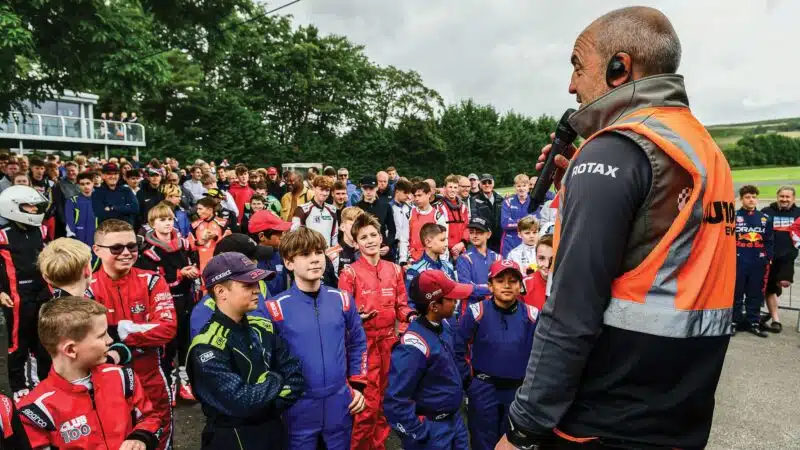
John Vigor briefs young Club100 racers
John Patterson
THE PRICE IS RIGHT
Any new venture can learn a thing or three from the most established turn-up-and-drive company in the UK. Martin Howell founded Club100 back in 1993 using TKM-powered Zip karts supplied by the legendary Martin Hines, running a six-round championship at Buckmore Park in Kent. John Vigor was involved from the start and in 2006 bought out Howell to lead Club100’s impressive expansion. Today, more than 3000 racers compete in the club’s variety of classes which have expanded to include all ages.
“It was always senior championships, for 15 and 16-year-olds to some over 70,” says Vigor. “Then three years ago we introduced junior and cadet classes as arrive and drive. It’s been absolutely incredible. We’re now running two cadet championships, with two weight categories within them. We’ve grown to the point where we’re running an eight-round southern championship, a five-round northern championship, 120 cadets in one weekend together with 158 juniors. It’s busy.”
The boom in F1 interest has trickled down to karting, says Vigor. Motor sport is more popular now than it has ever been. Although John is vigilant on keeping expectations realistic – especially when it comes to parents. The costs for owner-driver karting, involving a pro team running a high-performance kart, can head into six-figure sums – for seven-year-olds at cadet level. Scouts with contacts at the established junior single-seater and F1 teams are watching, but that only makes it more brutal, now more than ever. “They’ve got to be seven or eight,” says Vigor of those with genuine F1 potential. “If they are 10 or more it’s too late. That’s how it is now.”
Club100 offers something more viable. “It’s a fixed cost because that is what arrive and drive is,” says Vigor. “This is what attracts people, and it’s convenient. We race under MSUK regulations, all of the drivers and parents must have a licence. They know they are going to get a properly run race meeting, with safety standards in place. It’s £285 a round, and for that they’ll get a day’s racing – about 45-50 minutes of track time, which is ample. Do the sums for an eight or five-round championship. And you don’t have to do every round, you can dip in and out.”
For those who wish to progress to owner-driver karting, rather than dive into the high-cost national level, Vigor advises “a season at a local kart club. If you are sensible about it and don’t buy new things for every round you can do it for a little bit more budget than it costs for Club100. Just get out there and see if your kid has got it.”
“They’ve got to be seven or eight. If they are 10 or more it’s too late”
Vigor also serves on MSUK’s karting committee and is right behind the new initiative to back the arrive and drive concept. “We’ve been shouting this for years, saying look, the bottom grass-roots level doesn’t start with owner-driver karting. That represents less than 2% of racers. Ninety-eight per cent of those who race karts in this country are doing it on an arrive and drive basis. MSUK has recognised 38 indoor venues and launched a couple of years ago the British Indoor Karting Championship [BIKC, run by TeamSport]. We in turn as Club100 are the title sponsors and their champions in all their categories win a full season with us, so we’ve created a ladder from indoor karting onwards to us, and then onwards from there.
“We give those who want to go on sound advice and advise on the right people to approach for owner-driver karting. That is when the cheque book has to come out, and then the costs do go up.”
ELECTRIC DREAMS
Rob Smedley is best remembered as the forthright race engineer from Middlesbrough who was in Felipe Massa’s ear at Ferrari and Williams – “Felipe, Fernando is faster than you” and all that. Today, having long burst out of the F1 bubble, he’s running an arrive and drive electric karting initiative with high ambition, and has a new partner with a famous family lineage to help achieve it.
Ferdi Porsche is the great-grandson of the sports car giant’s founder, Ferdinand. He owns FAT (Français Allemande Transite), what used to be a transport logistics company best known for its stickers on Porsche’s Le Mans winners in 1994 and 1997. Under the FAT moniker, Ferdi has altruistic aims to make a lasting societal contribution to ‘car culture’. A mutual friend introduced him to Smedley and in each other they discovered kindred spirits. They have rebranded Smedley’s Global Karting League as FAT Karting League with the target to “collapse” the cost of racing for kids and drive “accessibility and diversity” in motor sport.
Smedley found his new calling after walking away from the F1 frontline in 2019. “What drove it home for me was when I was at Ferrari we had a significant budget for drivers to pick and choose the best on the market,” he says. “Then at Williams we had about negative of whatever the dollar value was of Ferrari’s budget. So you had to get guys that came in and paid. That jarred.”
Unearthing talent from “atypical non-traditional backgrounds” is the target. Now having run his series under the auspices of MSUK in Britain, the FAT Karting League will upscale the concept. Two new ‘hubs’ out of which series will run are to open in the US this year, in Indianapolis and California, with four more planned for 2026. “In the next six years we will be at 50 hubs at least and these hubs will be on all continents,” states Porsche. “This year our three hubs [including the established UK series] will work in isolation as their own championships, but you will also build points for the big event at the end of the year: The FAT Cup.” The prize for the age-appropriate class will be a seat in British Formula 4 for next season.
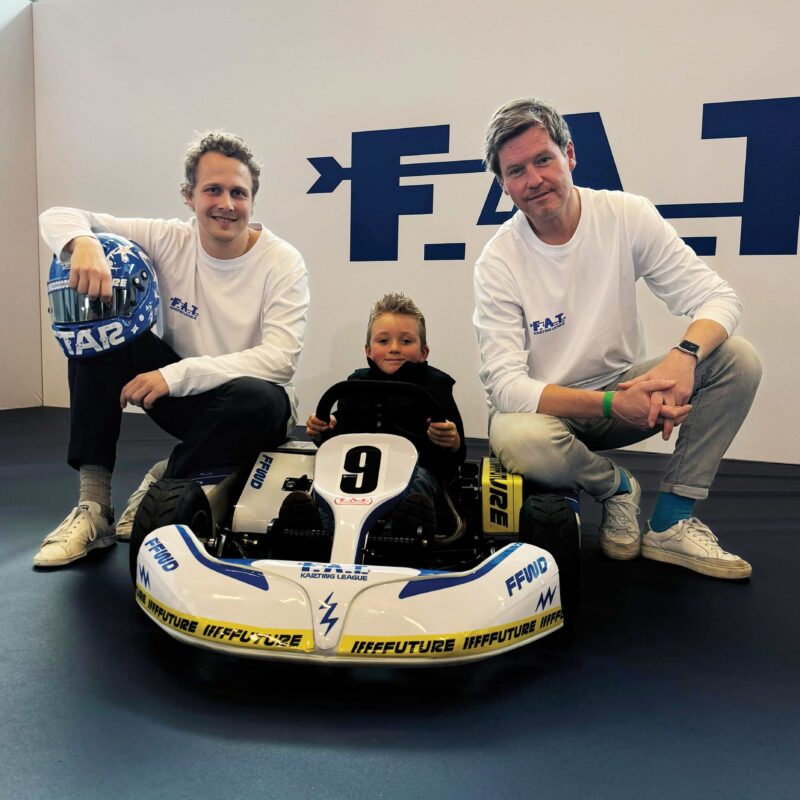
Ferdi Porsche, left, and Rob Smedley at the launch of the FAT Karting League in 2024
John Patterson
Smedley and his hand-picked team of engineers have designed and created the bespoke karts to handle as if they are conventionally powered – which is important if the concept is to be relevant to the rest of the motor sport ladder. “One of the problems with electric karts is you can get yourself into trouble, then get yourself out with what used to be the loud pedal,” says Smedley. “You can’t do that with these karts. You have to drive them like conventional karts with momentum through the corners, like any racing car. The EV powertrain is based on our knowledge of MGU-k systems in F1 cars and we’ve worked very hard balancing the kart overall. A kart has a particular way of driving and we want it to be less of a leap to cars. You don’t shift your weight in a car like you do in a kart, for example. These are great fun to drive. Kids love them and you build up the same skills as in conventional karts.”
“You can tune them for the level of your experience,” Porsche points out. “Apart from the noise, there is no difference to traditional combustion karts. Electric is not only more efficient and ecological, it is also making this possible. It wouldn’t be without it. They are bloody fast too. And you don’t have 100% power coming out of the corners like electric cars tend to have, which would defeat the purpose of learning to drive properly.”
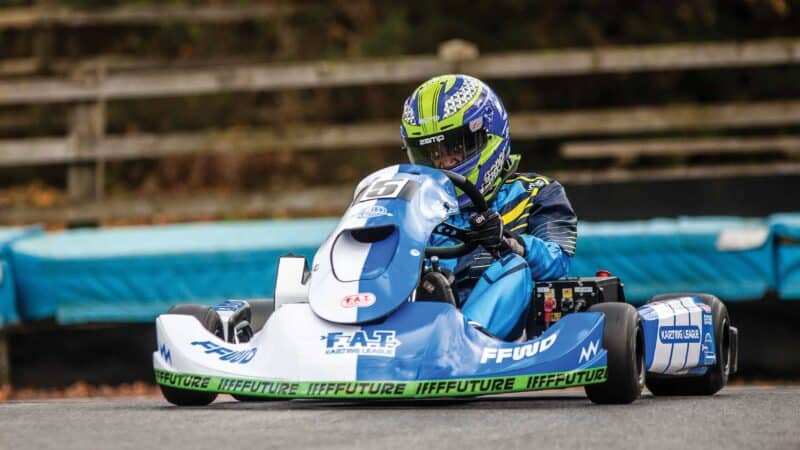
A season in the FAT Karting League averages out at around £4000; US ‘hubs’ are to open
Gavin Rathbone
And the price? Again, it’s fixed. “For the youngest kids, there’s testing at the start of the year, then nine to 10 full weekends during the season,” says Smedley. “You buy a season pass which gets you a discount. For five and six-year-olds the whole season all-in is about £3500. For older kids it’s around £4500. We recognise it’s still £4k, but it’s a huge step compared to the alternative route.”
The plan is, as they put it, to “close the loop” to F1 – although quite what happens to the winners beyond prize drives in F4 is not yet clear. Still, the intentions appear genuine. “The best driver probably hasn’t raced yet and it’s super-exciting to make racing accessible to more people,” says Porsche. “The ultimate proof will be if the [next] female F1 driver comes from the FAT Karting League. Already more than 30% of our entrants are female. And if only single-digit percentages of females are racing in series worldwide obviously there’s a smaller chance of one making it. That achievement would be the ultimate proof that we’ve done something special.”
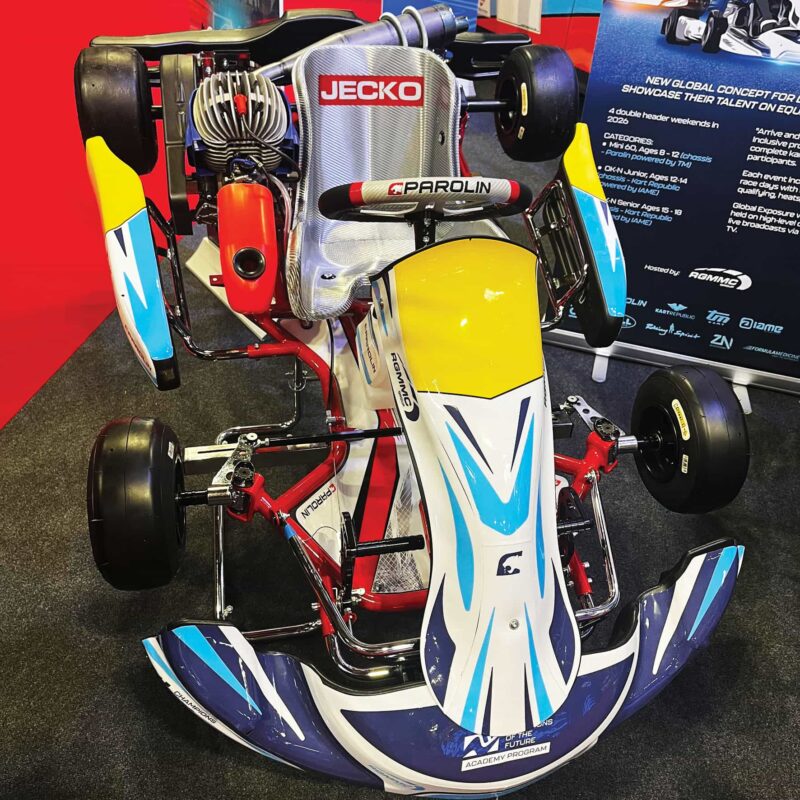
After a launch at the Abu Dhabi GP in 2023, Champions of the Future is set to arrive in the UK in 2026
Gavin Rathbone
THE NEXT STEPS
Hugh Chambers, CEO of MSUK, is well-versed in arrive and drive karting: he reckons he was Club100’s first race winner in 1993. “What John Vigor and his team have done is extraordinary,” he says. “They’ve made it accessible and affordable and brought on British talent to race in the British Kart Championship.”
Now in the wake of the FIA’s push, a higher level of performance arrive and drive is coming to the UK in 2026. If Champions of the Future sounds familiar, there’s a good reason. The original concept was launched by Martin Hines in the mid-1990s with support from McLaren and Mercedes. Lewis Hamilton and Gary Paffett were early graduates.
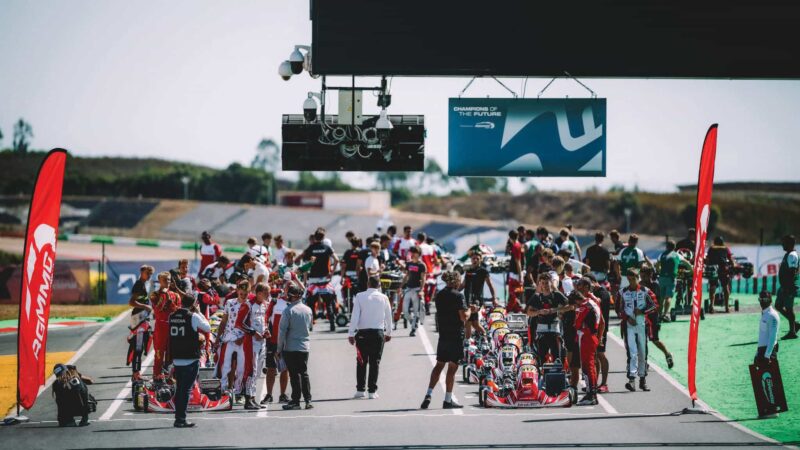
Champions of the Future is aimed at the elite level, with equipment to match
Gavin Rathbone
James Geidel is behind the revived version. “I raced Champions of the Future when I was 10 years old,” he explains. “I came from Spain, but my father said, ‘We want to do the best championship in the world. The UK is the home of motor sport.’ So we came over. That’s where I first heard the name. A few years later I trademarked it and had it in my pocket for about 10 years not knowing what to do with it. Then this series came along and it was the perfect time to use it.”
“It’s super-exciting to make racing accessible to more people”
Geidel launched his arrive and drive concept at the Abu Dhabi GP in 2023 (the winner, James Anagnostiadis, is now affiliated to Mercedes-AMG). Now Geidel’s RGMMC Group has launched the 2026 Motorsport UK British Champions of the Future Academy Programme. Six rounds will take place at four UK locations next year, for three classes: the Mini 60 for ages 8-12 (on a Parolin chassis powered by TM); OK-N Junior for ages 12-14 (on a Kart Republic chassis powered by IAME); and OK-N Senior for ages 15-plus (again on a Kart Republic-IAME). All karts and engines will be drawn by lottery for each event as the series strives to ensure a level playing field.
Geidel makes it clear his concept is aimed at drivers (and their parents) who have career ambition. “Arrive and drive is grass roots, but what we are doing is the opposite: going for the professionals,” he says. “We’re delivering a concept to the highest level of karting with the top equipment. It’s the other way from Club100 or what Rob is doing with his electric series. We have already launched worldwide, with three series in the United Arab Emirates and three in Europe. We’ve opened up for this season and we’re sold out. And because of our partnership with Formula 1 Academy” – the all-female single-seater series that is going into its third season – “our female participation is up to 30%. In 2025 it will be 50% in the senior category. The whole concept is just exploding.”
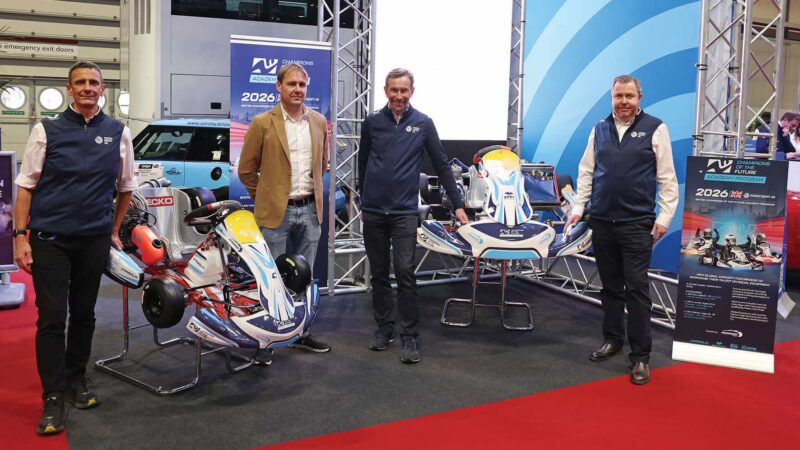
MSUK’s Dan Parker and John Ryan flank James Geidel and Hugh Chambers at an NEC stand in January
Gavin Rathbone
Costs for the UK series are yet to be announced – Chambers confirms they will be fixed – but a six-round season in the European Senior OK-N class is £25k. Relative to equivalent owner-driver options, it’s much less.
The point is there should be something for everyone and every budget. “We’re building a karting pathway in the UK with TeamSport and indoor karting,” adds Chambers. “You have a pool of 1.5 million customers, 300,000 kids under 11 and 30% of them are female. That’s what I’m focusing on: how do we find talent from a bigger pool? In the British Indoor Karting Championship last year, the top female was Freya Lally and she now has a season in Club100 fully funded by MSUK and F1 Academy. The intention is to take those girls through Champions of the Future as the next step after Club100.”
Driving talent to the elite level matters, but it’s also important to remember junior karting doesn’t have to be about discovering the next Formula 1 generation. Predominantly introducing kids from all backgrounds to a great sport and proving it’s not necessarily out of reach should be the point. And like all sport, it’s always supposed to be fun.
